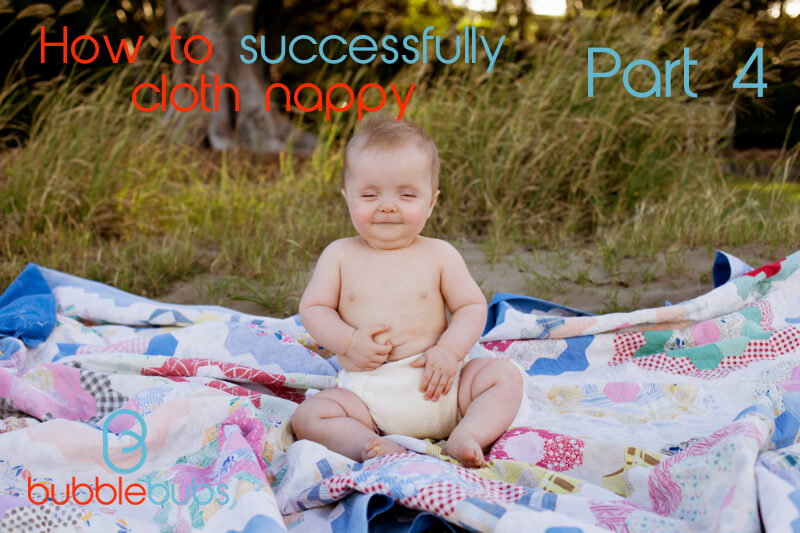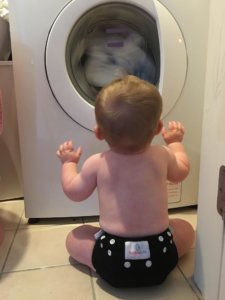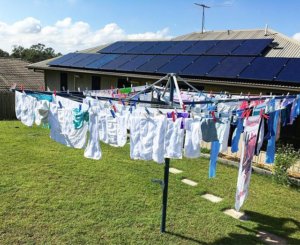
How to cloth nappy successfully - Part 4 Caring for your nappies
When you first start researching about how to care for your nappies it can be very overwhelming. But, like all things with cloth, I promise you it’s not that hard once you get your head around it. And this blog post is here to do just that. It will seem like it’s very complicated but really it’s simple there’s just lots of information out there about how to make it perfect and that’s purely because washing nappies is like the varsity leagues of laundry. There’s poo and pee in them, they’re much dirtier than your average laundry. But with a few tips and tricks and the information in this blog you’ll soon be washing like a pro.
Prepping your new nappies
Let’s start at the very beginning. You’ve received your new nappies, hugged them, taken a photo for hubby, squealed a little bit. What do you do next? Prep them! You can prep them a couple of different ways. You can wash them 6-8 times before use which is a bit laborious and you have to be very patient, which I am not. Or you can just soak them overnight in plain water, wash them once and use straight away. They won’t be at full absorbency straight away but you can just change baby a little more frequently until they’ve been washed a few times and you’ll be fine. And best of all you get to start using them straight away! As a note, you only need to prep nappies like this if they’re made of natural fibres (hemp, bamboo, cotton). Microfibre just needs one wash to make sure any production chemicals are removed. Covers also only need to be washed one to make sure they’re clean.
Storing dirty nappies
Storing dirty nappies couldn’t be simpler. These days we don’t recommend storing them in a bucket of water. It’s cumbersome, breeds bacteria, is a drowning hazard and can be damaging to the PUL and elastics in modern cloth nappies. These days we dry pail. When looking for a dry pail you’ll want something with lots of holes, we want airflow. The more air the better. It seems counterintuitive but if you have good airflow you won’t have smells.
Pee nappies can just be thrown in the dry pail until wash day. Poo nappies should be rinsed before dry pailing. You’ve got a few poo removal choices. You can use a nappy sprayer like a Little Squirt one attached to your toilet or a home-made one rigged up in your laundry tub. You can also use all manner of everyday items to remove poo. Some of the popular options are a spatula, butter knives, and hair brushes. Try whatever takes your fancy. Just label that knife for goodness sakes! Once the poo is removed you can just pop it in the dry pail or give it quick spray with a stain spray (if you do this be sure to check it’s not one with a time limit on it).
Night nappies can benefit from a quick hand rinse before dry pailing. They contain large amounts of quite concentrated urine so it’s a good idea to rinse them in hot water with a tiny bit of detergent. Just rinse a couple of times until the water runs clear, then dry pail with the rest of the nappies.

The actual washing
Ok. Now we come to real part, the actual washing. When I told my grandma I would be using cloth she near had a heart attack. “Why would you do that to yourself?” she would bemoan every time I spoke to her, “Your Poppy would have to light the copper for me every morning before he went to work and I’d have to stir them for hours. It’s so much hard work!” What I could never quite make her understand is that I would not in fact be using a copper. I would be using this new fangled device, a washing machine! And it really does do all the work for you. You just need to figure out which buttons to hit.
Basically what you want to do is do a short wash to remove the bulk of the “ick” and then a long main wash to get your nappies sparkling clean. A wash cycle of every two days is ideal.
So let’s break this down...
You first wash or “prewash” should be a short wash that includes agitation (not just a rinse and spin) and you’ll want to use a small amount of detergent. The second wash or “main wash” should be the longest your machine will do. It should be warm or hot (40-60°C) and use the recommended dosage of detergent for a heavily soiled load. For the main wash you may also want to add small items (anything the size of a terry towelling nappy or smaller) to help with optimal loading and agitation.
Drying your nappies
This is the easy bit. If you can line dry it’s best for the environment and your electricity bill, not to mention your nappies. Hang inserts out in the sun to soak up those rays. Your covers you may want to be more careful with. You can either hang them outside for a short period of time or just hang inside. I hang mine over the edge of my washing basket inside and they’re dry in less than a day. Harsh sun can damage your PUL or fade your beautiful designs so it’s best to take care with covers. If it’s raining, or just if you prefer, you can dry your inserts in the dryer. This can take a while as they’re super absorbent! It’s best not to put your shells in the dryer but if you’re desperate you can reduce the heat and pop them in the dryer or just do them for a very short amount of time.

Phew ok. I know that was a lot of information but I do promise that within a couple of weeks it’s all second nature. It’s not a bad idea to sit down and write out your plan, just to get your head around things. My routine may or may not be laminated in our laundry, and you definitely don’t have to go to that extent. But hey, if you’ve got it written down there’s no excuse why your husband, mother or even mother-in-law can’t help you!
